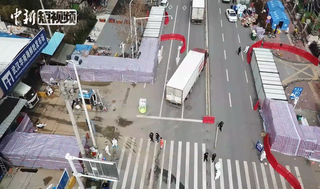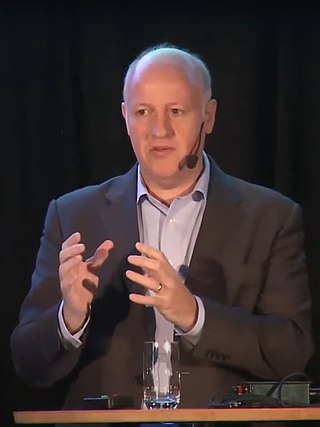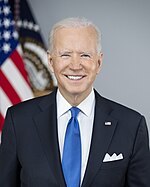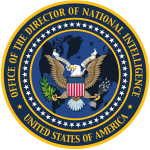EcoHealth Alliance is a US-based non-governmental organization with a stated mission of protecting people, animals, and the environment from emerging infectious diseases. The nonprofit is focused on research that aims to prevent pandemics and promote conservation in hotspot regions worldwide.
Shi Zhengli is a Chinese virologist who researches SARS-like coronaviruses of bat origin. Shi directs the Center for Emerging Infectious Diseases at the Wuhan Institute of Virology (WIV). In 2017, Shi and her colleague Cui Jie discovered that the SARS coronavirus likely originated in a population of cave-dwelling horseshoe bats in Xiyang Yi Ethnic Township, Yunnan. She came to prominence in the popular press as "Batwoman" during the COVID-19 pandemic for her work with bat coronaviruses. Shi was included in Time's 100 Most Influential People of 2020.

The Wuhan Huanan Seafood Wholesale Market, simply known as the Huanan Seafood Market, was a live animal and seafood market in Jianghan District, Wuhan City, the capital of Hubei Province, in Central China.

The Wuhan Institute of Virology, Chinese Academy of Sciences is a research institute on virology administered by the Chinese Academy of Sciences (CAS), which reports to the State Council of the People's Republic of China. The institute is one of nine independent organisations in the Wuhan Branch of the CAS. Located in Jiangxia District, Wuhan, Hubei, it was founded in 1956 and opened mainland China's first biosafety level 4 (BSL-4) laboratory in 2018. The institute has collaborated with the Galveston National Laboratory in the United States, the Centre International de Recherche en Infectiologie in France, and the National Microbiology Laboratory in Canada. The institute has been an active premier research center for the study of coronaviruses.

False information, including intentional disinformation and conspiracy theories, about the scale of the COVID-19 pandemic and the origin, prevention, diagnosis, and treatment of the disease has been spread through social media, text messaging, and mass media. False information has been propagated by celebrities, politicians, and other prominent public figures. Many countries have passed laws against "fake news", and thousands of people have been arrested for spreading COVID-19 misinformation. The spread of COVID-19 misinformation by governments has also been significant.

The World Health Organization (WHO) is a leading organisation involved in the global coordination for mitigating the COVID-19 pandemic within the broader United Nations response to the pandemic.

Peter Daszak is a British zoologist, consultant and public expert on disease ecology, in particular on zoonosis. He is the president of EcoHealth Alliance, a nonprofit non-governmental organization that supports various programs on global health and pandemic prevention. He is also a member of the Center for Infection and Immunity at the Columbia University Mailman School of Public Health. He lives in Suffern, New York.

This article documents the chronology and epidemiology of SARS-CoV-2 in 2019, the virus that causes coronavirus disease 2019 (COVID-19) and is responsible for the COVID-19 pandemic. The first human cases of COVID-19 known to have been identified were in Wuhan, Hubei, China, in December 2019. It marked the beginning of the 2019–2020 COVID-19 outbreak in mainland China.

The federal government of the United States initially responded to the COVID-19 pandemic in the country with various declarations of emergency, some of which led to travel and entry restrictions and the formation of the White House Coronavirus Task Force. As the pandemic progressed in the U.S. and globally, the U.S. government began issuing recommendations regarding the response by state and local governments, as well as social distancing measures and workplace hazard controls. State governments play a primary role in adopting policies to address the pandemic. Following the closure of most businesses throughout a number of U.S. states, President Donald Trump announced the mobilization of the National Guard in the most affected areas.

Misinformation related to the COVID-19 pandemic has been propagated by various public figures, including officials of the United States government. The Trump administration in particular made a large number of misleading statements about the pandemic. A Cornell University study found that former U.S. President Donald Trump was "likely the largest driver" of the COVID-19 misinformation infodemic in English-language media, downplaying the virus and promoting unapproved drugs. Others have also been accused of spreading misinformation, including U.S. Secretary of State Mike Pompeo, backing conspiracy theories regarding the origin of the virus, U.S. senators and New York City mayor Bill de Blasio, who downplayed the virus.

Since the beginning of the COVID-19 pandemic, there have been efforts by scientists, governments, and others to determine the origin of the SARS-CoV-2 virus. Most scientists agree that, as with many other pandemics in human history, the virus is likely derived from a bat-borne virus transmitted to humans via another animal in nature or during wildlife trade such at that in food markets. Many other explanations, including several conspiracy theories, have been proposed. Some scientists and politicians have speculated that SARS-CoV-2 was accidentally released from a laboratory. This theory is not supported by evidence.
The Chinese government has actively engaged in disinformation to downplay the emergence of COVID-19 in China and manipulate information about its spread around the world. The government also detained whistleblowers and journalists claiming they were spreading rumors when they were publicly raising concerns about people being hospitalized for a "mysterious illness" resembling SARS.

The COVID-19 lab leak theory, or lab leak hypothesis, is the idea that SARS-CoV-2, the virus that caused the COVID-19 pandemic, came from a laboratory. The theory is highly controversial; most scientists believe the virus spilled into human populations through natural zoonosis, similar to the SARS-CoV-1 and MERS-CoV outbreaks, and consistent with other pandemics in human history. Available evidence suggests that the SARS-CoV-2 virus was originally harbored by bats, and spread to humans from infected wild animals, functioning as an intermediate host, at the Huanan Seafood Market in Wuhan, Hubei, China, in December 2019. Several candidate animal species have been identified as potential intermediate hosts. There is no evidence SARS-CoV-2 existed in any laboratory prior to the pandemic, or that any suspicious biosecurity accidents happened in a laboratory.
DRASTIC is a loose collection of internet activists assembled to investigate the origins of COVID-19, in particular the lab leak theory. Composed of about 30 core members, and primarily organized through the social media website Twitter, DRASTIC was formed in February 2020, at the start of the COVID-19 pandemic. DRASTIC members called for a "full and unrestricted investigation" into the origins of COVID-19, conducted independently of the World Health Organization; most scientists thought that COVID-19 likely had a natural origin, and some considered that a potential lab leak was worth investigating.

Scientific Advisory Group for Origins of Novel Pathogens is a permanent advisory body of the World Health Organization, formed in July 2021, with a broad objective to examine emerging infectious diseases, including COVID-19. According to the WHO Director-General, "SAGO will play a vital role in the next phase of studies into the origins of SARS-CoV-2, as well as the origins of future new pathogens." The group was formed after the WHO-convened Global Study of Origins of SARS-CoV-2 was disbanded by the WHO. In February 2022, the WHO Director General visited China and met the Chinese premier and discussed the need for "stronger collaboration on Covid-19 virus origins, rooted in science and evidence". In July 2023, a review article in The New York Times details information to date about the origins of the Covid-19 virus.
The WHO-convened Global Study of Origins of SARS-CoV-2 or the Joint WHO-China Study was a collaborative study between the World Health Organization and the Government of China on the origins of COVID-19. The study was commissioned by the Director-General of the World Health Organization following a request by the 2020 World Health Assembly in which 122 WHO members proposed a motion, which included a call for a "comprehensive, independent and impartial" study into the COVID-19 pandemic" The WHO disbanded the team and proposed a new panel called Scientific Advisory Group for Origins of Novel Pathogens.
The Lancet letter was a statement made in support of scientists and medical professionals in China fighting the outbreak of COVID-19, and condemning theories suggesting that the virus does not have a natural origin, which it referred to as "conspiracy theories". The letter was published in The Lancet on February 19, 2020, and signed by 27 prominent scientists, gaining a further 20,000 signatures in a Change.org petition. The letter generated significant controversy over the alleged conflicts of interest of its authors, and the chilling effect it had on scientists proposing that the COVID-19 lab leak theory be investigated.
Kristian Andersen is a evolutionary biologist and professor in the Department of Immunology and Microbiology at Scripps Research in La Jolla, California.

During the COVID-19 pandemic in mainland China, the government of China under CCP general secretary Xi Jinping's administration pursued a zero-COVID strategy to prevent the domestic spread of COVID-19 until December 7, 2022. Aspects of the response have been controversial, with the zero-COVID approach being praised and the government's lack of transparency, censorship, and spread of misinformation being criticized. The government abandoned its zero-COVID policy on 7 December 2022.

The COVID-19 Origin Act of 2023 is an Act of Congress that requires the Director of National Intelligence to declassify information relating to potential links between the Wuhan Institute of Virology and the origin of the coronavirus disease 2019 (COVID-19), not later than 90 days after the enactment of the act.









